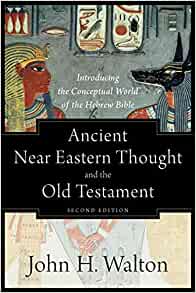Despite its title, little in this book has any relevance to the study of the Old Testament. Indeed, it gives no answers even to obvious questions. Who, for example, were the ‘baals’ (in the plural) and why was Jezebel’s ‘baal’ worse than the others (1 Kings 16:31)? The book acknowledges only one god of that name, while the one passing reference to Jezebel is buried in the text, unmentioned in the wholly inadequate index. Yet the limitations of this as a reference book mask much more serious problems.Old Testament passages are discussed in parallel with supposedly equivalent material from pagan literature. However, the Old Testament is not part of the ‘traditions’ of the Ancient Near East – it is the word of God, which sits in judgement on those traditions and has always done so. Professor Walton dismisses those who believe this – or who believe in, say, the historicity of Chronicles – as ‘confessional scholars’.Implicit throughout the book, and explicit in places, is the belief that academic scholarship is needed to uncover the meaning of the Old Testament. Yet bringing Professor Walton’s erudition to bear on the text produces grotesque results.Jeremiah 31:33 (‘I will put my law in their minds and write it on their hearts’) is, we are told, related to the heathen practice of reading messages from the gods on the internal organs of sacrificial victims – an interpretation which it is difficult to read with a straight face!We have heard all this before. The liberal theologians went down this route, denying the inerrancy and sufficiency of Scripture and substituting the authority of the scholar for the authority of the word of God. It ended then in the wasteland of unbelief and is not a path that we should tread now.The description of the pagan material is printed in clear, readable type, while the discussion of the Old Testament is largely confined to ‘sidebars’ – grey boxes with the text in a smaller typeface. In fact, the appearance of the page reflects perfectly the contents of the book, with the thoughts of man central and the word of God pushed to the margins.
Ancient Near Eastern Thought and the Old Testament: Introducing the Conceptual World of the Hebrew Bible

Join the discussion
Read community guidelines
ADVERTISE



